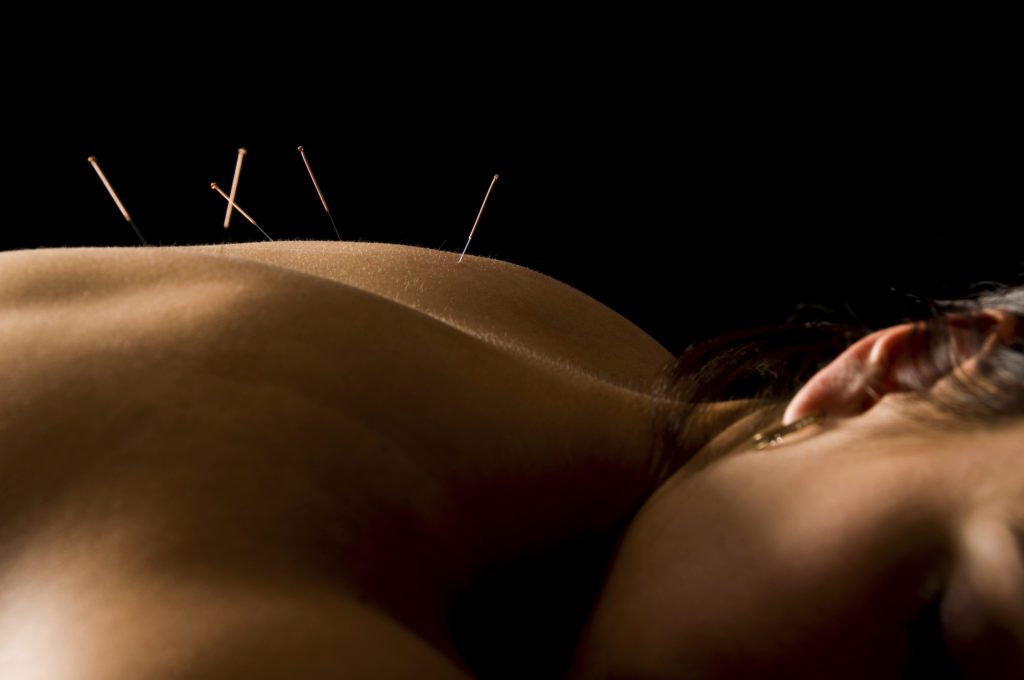Acupuncture and Dry Needling are safe and effective techniques that can provide pain relief, reduce muscle spasm, and assist with injury rehabilitation. These two modalities have a similar appearance in use, while at the same time having separate philosophical applications for use.
Acupuncture
What is Acupuncture?
Acupuncture is a form of eastern medicine, originating in China over 5000 years ago. Traditional Chinese Medicine (TCM) includes acupuncture, as well as herbal medicine, exercise, dietary changes, and massage. These TCM approaches, including acupuncture, are based on the belief that health is determined by a balanced flow of chi, the vital life energy present in all living organisms.
Acupuncture theory indicates that chi circulates throughout the body along various pathways, called meridians. The western medicine use of acupuncture formally recognizes 12 meridians, with each associated with specific internal organs and organ systems. In addition to the 12 major pathways, traditional acupuncture includes numerous other meridian systems in which chi affects the body. Acupuncturists affect the flow of chi within the body by inserting very fine, sterile, single-use needles at specific points along the meridians. The applications of these needles helps to redirect and support optimal flow of chi within the body. This therapy often results in relieving stress, tension, and pain. Additionally, acupuncture can be used as a way to support optimal organ function due to the meridian associations with the various organ systems. Acupuncture theory suggests that when chi becomes stagnant, or when it does not flow throughout the body appropriately, imbalances and dysfunction will set in, leading to symptoms within the patient. In addition to performing acupuncture with needles, other acupuncture procedures can be used such as cupping, laser stimulation, and tapping.

Acupuncture for Pain?
The most common use for acupuncture at Synergy Chiropractic of Houston is for pain relief. Pain resulting from an auto accident injury will typically respond well following acupuncture sessions. However, acupuncture can be used to treat nearly all sources of muscle and joint pain. We find that acupuncture can provide great relief for neck pain, headaches, shoulder pain, elbow pain, hand and wrist pain, back pain, hip and leg pain, knee pain, ankle pain and fibromyalgia.
Even though acupuncture may sound scary, since it may involve needles, most patients report that they rarely feel the needle being used, and the relief is much better than suffering in pain.
Dry Needling
What is Dry Needling?
From the outside looking in, dry needling looks very similar to acupuncture from a treatment standpoint. Clinically speaking, dry needling is an effective technique used to address muscular pain and myofascial dysfunction. Dry needling, also known as intramuscular stimulation (IMS), is a technique developed by Dr. Chan Gunn, and is effective for relaxing overactive muscles, reducing trigger points, and reducing pain from muscle spasms.
The major difference between acupuncture and dry needling is the application of the needle. Dry needling philosophy involves inserting the needle into the muscle’s trigger points without following the acupuncture meridian model. Dry needling does not involve injecting any medications, or substances into the trigger point.
The approach is based on Western anatomical and neurophysiological principles. It should not to be confused with the Traditional Chinese Medicine (TCM) technique of acupuncture. However, since the same filiment needles are used in both dry needling and acupuncture, the confusion is understandable.
